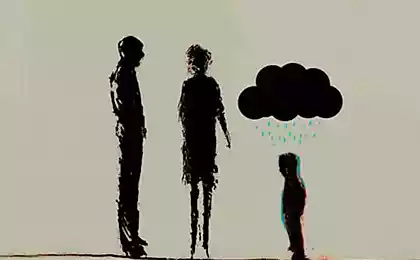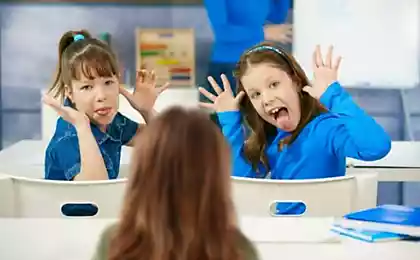194
The mother of a first-grader was outraged because of the school assignment, even adults can not solve this problem
In one parent chat of schoolchildren of the 1st grade, a serious discussion broke out. The teacher had to explain to parents why children in elementary school are given such difficult tasks. After all, not always even parents can understand the essence of the task, let alone solve it. And the task was not so much on the knowledge of mathematics as on logic and flexibility. After all, it was not so difficult to solve it, the main thing is to correctly explain the order of action to the child.

Our brain is a very complex mechanism that is still not fully understood. But the more we put development and concepts into children from an early age, the easier it will be for them in adulthood. A child is not born with any knowledge, he accumulates it through knowledge and experimentation. The more parents pay attention to the development of thinking, memory and logic, the greater the chances of raising a talented intelligent child. And in adulthood, such a person can find a way out of any life situation.

Scientists have long established that the left and right hemispheres of the brain are responsible for different processes. For example, the left hemisphere is logical and abstract thinking, speech, writing and reading, as well as ordinal counting. The right hemisphere is responsible for orientation in space, creative thinking, determining rhythm, emotions, memory. Up to 7 years old, the child has a more right hemisphere, so he learns to navigate the terrain, remembers the intonation of people and feelings. The left hemisphere is fully formed by the age of 10, and at this age the child learns consistent logical actions.

Recently, school curricula have been increasingly designed with brain research in mind. It is difficult for young children to sit still for a long time and engage in monotonous actions. They need to move more and learn about the world around them. Therefore, programs for 1-2 classes are held more and more in a playful form, which allows children to perceive information and learn to communicate with each other. Understand what other people like and don’t like. 3-4 classes are more focused on perseverance and consistent memorization of information. Therefore, in these classes, an intensive study of languages, mathematics, consecutive long-term actions begins.

The problem that was proposed to children in the first grade can be solved through a complex system of equations. But first-graders don't know about it yet. And if parents can solve this problem on their own, then it is unlikely that they will be able to explain to their children. They are not yet able to understand these mathematical calculations, and can only remember without understanding the logic. Therefore, we will postpone the system of equations for more adult classes, and try to explain to the child in spatial thinking.

And so, we are given: a circle and a square together weigh 10 kg. The circle and triangle are 20 kg, and the triangle and the square weigh 24 kg. You can go by the selection method, for example, a circle and a square weigh 5 kg, then the triangle weighs 15 kg, and the square - 9 kg. But as soon as we change the value and the circle we will weigh not 5, but 4 kg, then the result will be completely different. And this task will take a very long time to solve. But in life we meet with such tasks very often, we simply do not always give them due importance.

If we look closely at the drawing, we notice that we have drawn two circles, a pair of squares and two triangles. We add all our numbers: 10+20+24. The total is 54 kg. And to find out how much one circle weighs, the square and the triangle need 54 simply divided into two. And we get 27 kg. And then you can play with the child in the selection of numbers to find out how much each geometric figure weighs in any of the three proposed combinations.
Such tasks are useful not only for children but also for adults. We have already written about the benefits of solving simple mathematical examples. Devoting 10-15 minutes of time each day can preserve the flexibility of thinking until very old age.

Our brain is a very complex mechanism that is still not fully understood. But the more we put development and concepts into children from an early age, the easier it will be for them in adulthood. A child is not born with any knowledge, he accumulates it through knowledge and experimentation. The more parents pay attention to the development of thinking, memory and logic, the greater the chances of raising a talented intelligent child. And in adulthood, such a person can find a way out of any life situation.

Scientists have long established that the left and right hemispheres of the brain are responsible for different processes. For example, the left hemisphere is logical and abstract thinking, speech, writing and reading, as well as ordinal counting. The right hemisphere is responsible for orientation in space, creative thinking, determining rhythm, emotions, memory. Up to 7 years old, the child has a more right hemisphere, so he learns to navigate the terrain, remembers the intonation of people and feelings. The left hemisphere is fully formed by the age of 10, and at this age the child learns consistent logical actions.

Recently, school curricula have been increasingly designed with brain research in mind. It is difficult for young children to sit still for a long time and engage in monotonous actions. They need to move more and learn about the world around them. Therefore, programs for 1-2 classes are held more and more in a playful form, which allows children to perceive information and learn to communicate with each other. Understand what other people like and don’t like. 3-4 classes are more focused on perseverance and consistent memorization of information. Therefore, in these classes, an intensive study of languages, mathematics, consecutive long-term actions begins.

The problem that was proposed to children in the first grade can be solved through a complex system of equations. But first-graders don't know about it yet. And if parents can solve this problem on their own, then it is unlikely that they will be able to explain to their children. They are not yet able to understand these mathematical calculations, and can only remember without understanding the logic. Therefore, we will postpone the system of equations for more adult classes, and try to explain to the child in spatial thinking.

And so, we are given: a circle and a square together weigh 10 kg. The circle and triangle are 20 kg, and the triangle and the square weigh 24 kg. You can go by the selection method, for example, a circle and a square weigh 5 kg, then the triangle weighs 15 kg, and the square - 9 kg. But as soon as we change the value and the circle we will weigh not 5, but 4 kg, then the result will be completely different. And this task will take a very long time to solve. But in life we meet with such tasks very often, we simply do not always give them due importance.

If we look closely at the drawing, we notice that we have drawn two circles, a pair of squares and two triangles. We add all our numbers: 10+20+24. The total is 54 kg. And to find out how much one circle weighs, the square and the triangle need 54 simply divided into two. And we get 27 kg. And then you can play with the child in the selection of numbers to find out how much each geometric figure weighs in any of the three proposed combinations.
Such tasks are useful not only for children but also for adults. We have already written about the benefits of solving simple mathematical examples. Devoting 10-15 minutes of time each day can preserve the flexibility of thinking until very old age.
How to avoid pitfalls when borrowing against real estate in Tyumen
Ukrainian witch Oksana made a tarot and told when the war will end























